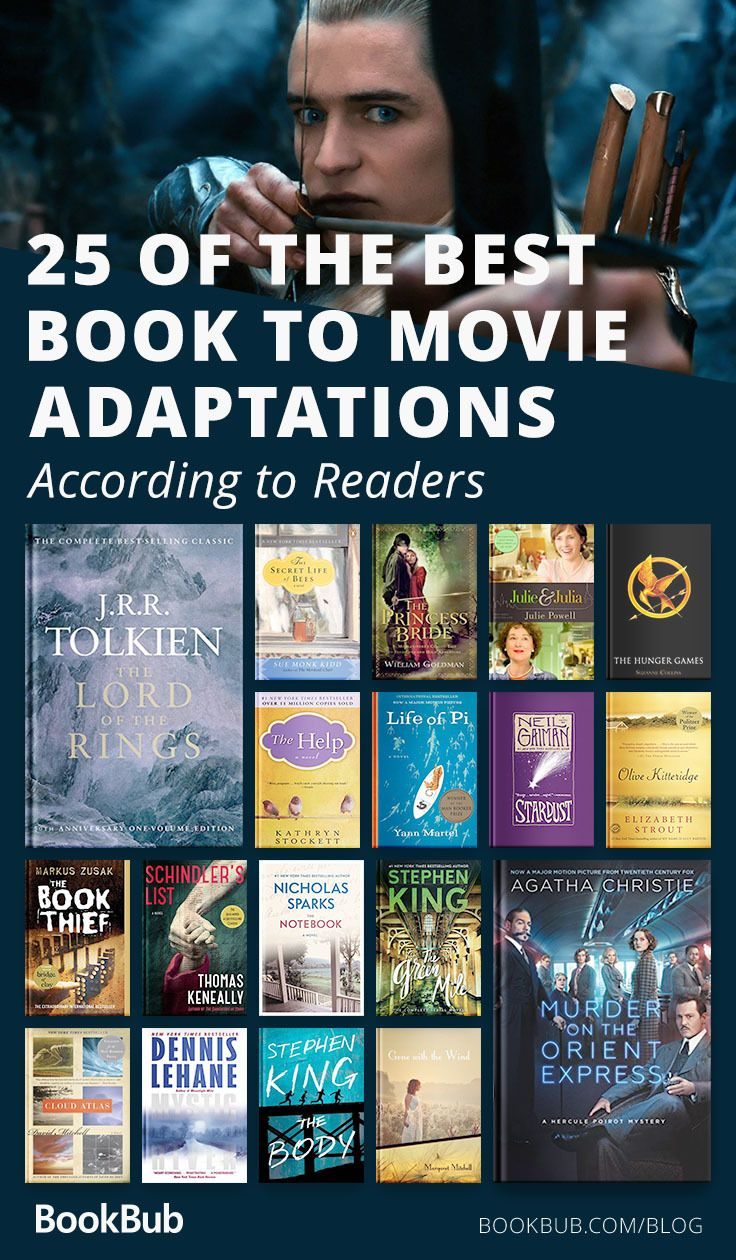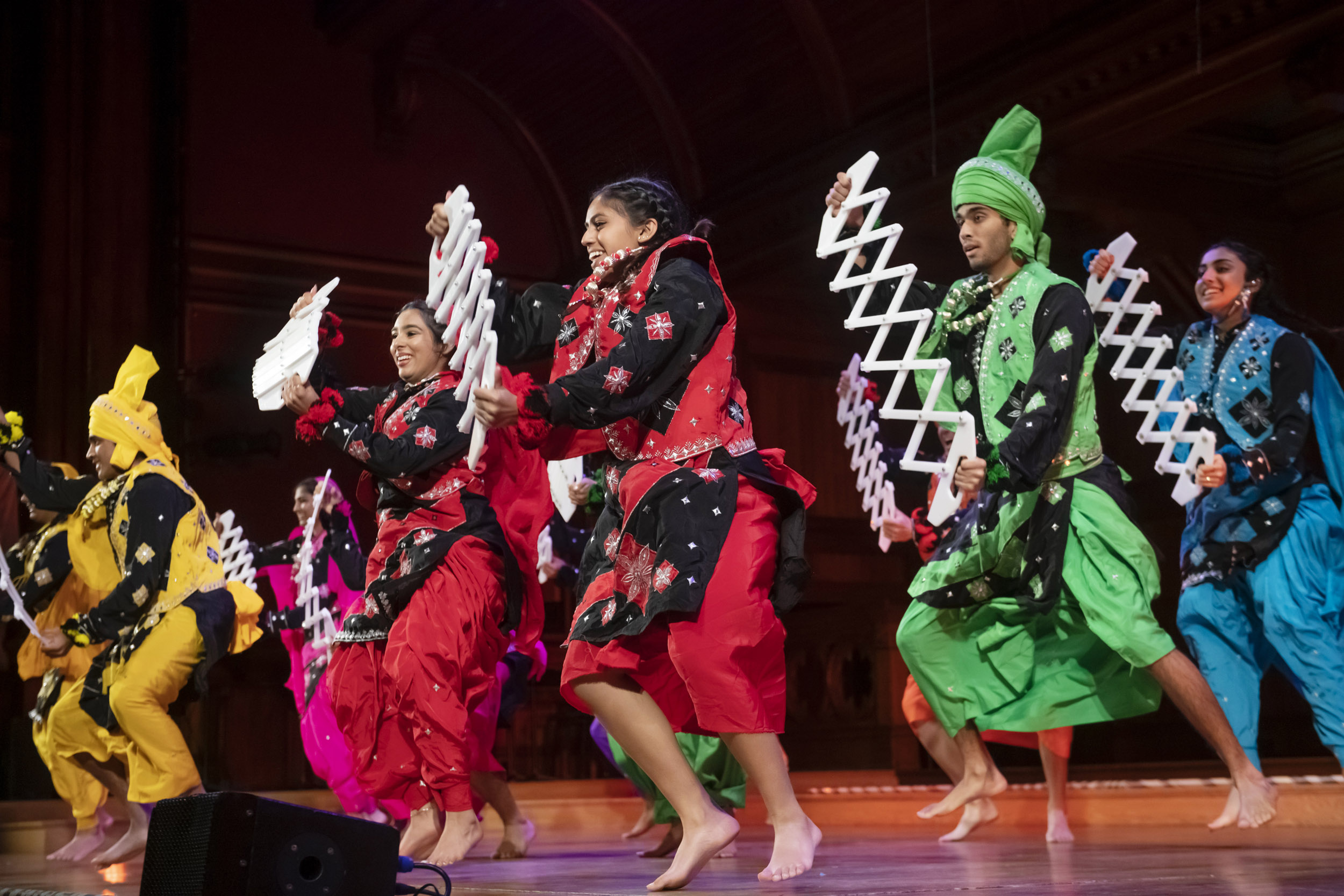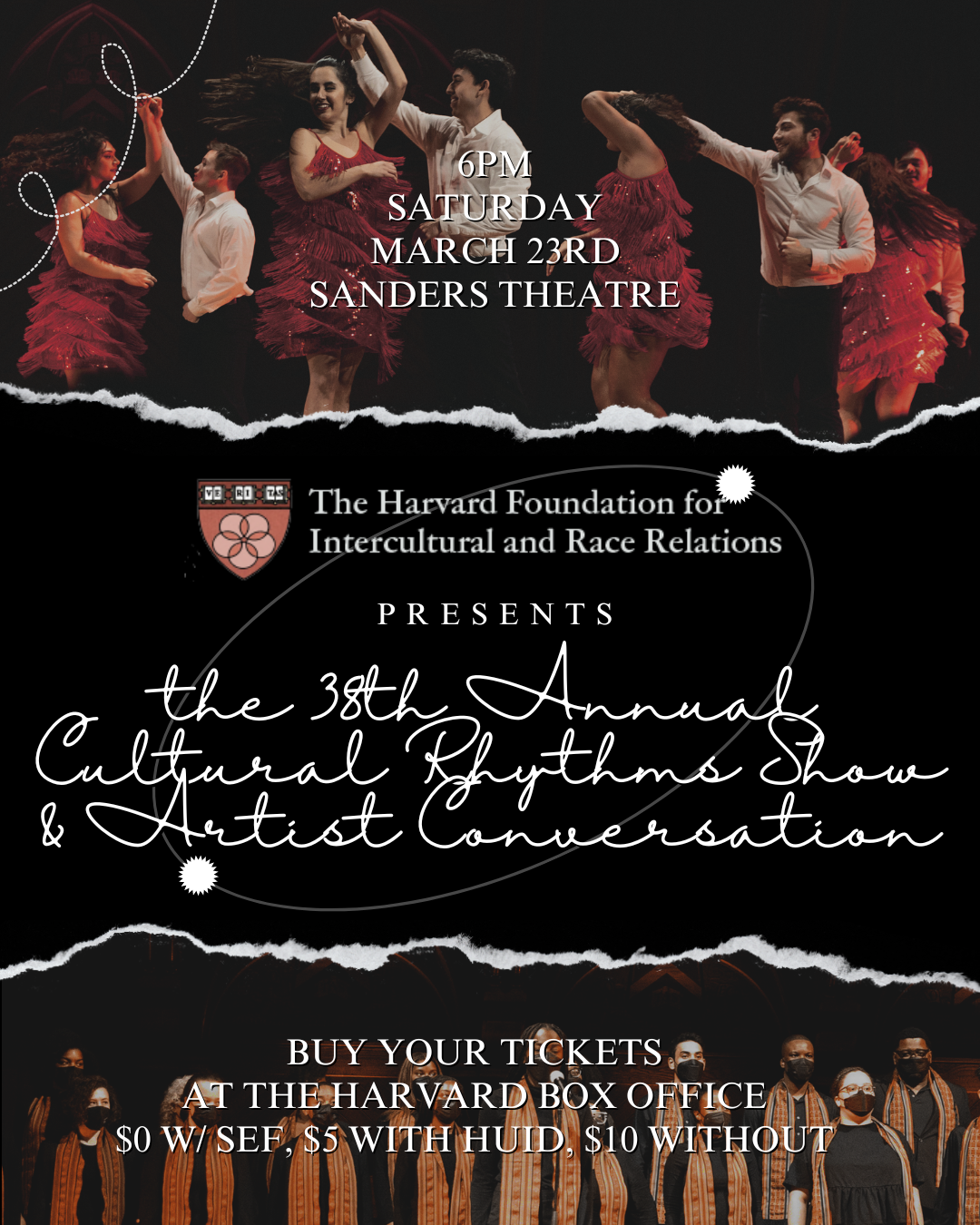Book adaptations have a unique ability to breathe new life into our favorite stories, transforming novels turned into films into captivating cinematic experiences. As audiences flock to theaters during award season, the debate over whether the book or the movie reigns supreme reignites. Many film adaptations spark discussions on how closely they follow their literary sources, leading to a fascination with the best book-to-film adaptations that often elevate the original narrative. From timeless classics to modern bestsellers, movies based on books offer fresh interpretations that can both challenge and enhance our understanding of the written work. This intriguing interplay between literature and cinema invites us to explore the depths of storytelling across different mediums, revealing insights that enrich our appreciation for both forms of art.
When discussing the art of translating written narratives to the silver screen, it’s clear that adaptations can significantly shift our perception of a story. These transformations often explore how literature is portrayed in visual formats, drawing parallels between textual storytelling and filmic interpretations. Many viewers find it fascinating to see how directors and screenwriters develop film versions that convey the essence of the original material. Such shifts not only highlight the creativity involved in adapting novels but also shine a light on the broader literary and cinematic landscape. Engaging with such films allows us to appreciate the nuances of storytelling, whether it’s through intricate character development or thematic explorations.
The Impact of Film Adaptations on Literature
Film adaptations have profoundly influenced the literary landscape, often bringing new audiences to classic novels and introducing readers to works they might never have encountered otherwise. By translating the intricacies of a written narrative into a visual medium, filmmakers can highlight themes, characters, and settings in ways that resonate with contemporary viewers. This transformation from page to screen can open up complex narratives to new interpretations, allowing the essence of the original work to be appreciated from a fresh perspective. For instance, adaptations like ‘Misery’ and ‘L.A. Confidential’ not only invite audiences to explore the underlying themes present in the novels but also spark discussions about the differences between literature and cinema, prompting a deeper understanding of narrative structures across different formats.
Moreover, film adaptations often come with the challenge of condensing rich narratives into a finite runtime, leading to a creative dialogue between the original material and its adaptation. The process can reveal which elements of a story resonate in a more visual format, as seen in adaptations of sprawling epics or novels with intricate plots. This distillation can introduce a new narrative clarity, making the story more accessible while still paying homage to its literary roots. The conversations that arise from these adaptations can also lead to a renewed interest in the original texts, as viewers seek to explore the source material that sparked their cinematic fascination.
Exploring the Best Book-to-Film Adaptations
Universally acknowledged as a notable entry in the realm of book adaptations, the film ‘L.A. Confidential’ exemplifies how a screenplay can breathe life into its source material. Although the original novel by James Ellroy is rife with narrative complexity and character depth, the film captures the gritty essence of 1950s Hollywood, leaving audiences captivated by its noir aesthetic. The filmmakers made essential changes to streamline the plot, rendering it more engaging for movie-goers. However, they also managed to retain the core themes of corruption and moral ambiguity that characterize Ellroy’s work. This careful balance of creativity and fidelity to the source material showcases how the best adaptations can resonate on multiple levels, providing both an entertaining cinema experience and fostering an appreciation of the literary work.
Another remarkable example of a successful book-to-film adaptation is ‘Misery,’ based on Stephen King’s captivating horror novel. While the film has been previously praised for its solid performances and faithful representation of the source, it also enhances certain aspects of the narrative that deepen the viewer’s understanding of the characters’ psyches. The film mirrors many themes found in King’s book, such as obsession and the dynamics of power between author and fan, while also delivering a thrilling cinematic experience. The movie adaptation alters certain plot elements to fit the visual medium, yet this allows for emotional beats to resonate with the audience in unique ways. This transformation exemplifies how a film can not only tell a story but also enhance the thematic undercurrents that make the original text so compelling.
Should Films Stay True to Their Source Material?
The debate surrounding fidelity in film adaptations often raises the question: should filmmakers remain loyal to the source material? While some argue that sticking closely to the original text maintains the author’s vision, others believe that creative freedom in adaptation allows for greater artistic expression. Viewer expectations must also be considered, as audiences may come to a film with preconceived notions from the book. Striking a balance between staying true to the essence of the story and allowing for creative reinterpretation can lead to compelling adaptations. An example of this tension can be observed in the adaptation of ‘American Psycho,’ where director Mary Harron crafted a version that infused dark humor into Bret Easton Ellis’s original, resulting in a vibrant exploration of the book’s themes and character motivations.
Critics often assert that the best adaptations stand on their own merit while paying homage to the original work. Well-executed adaptations can provide a fresh take on familiar narratives, reshaping viewer perceptions and even enhancing literary enjoyment. The combination of powerful visuals, performances, and direction can evoke emotions and thoughts that may not be as effectively communicated within the constraints of novelistic prose. In this light, adaptations like ‘Smooth Talk,’ based on Joyce Carol Oates’ short story, utilize cinematic techniques to expand the narrative’s emotional landscape and add depth to character interactions, demonstrating that art is always open to reinterpretation.
How Novels Encourage Cultural Conversations Through Adaptation
Novels turned into films often serve as a focal point for cultural discussions and reflections on societal values, ethics, and human behaviors. By adapting stories into a visual format, filmmakers can engage broader audiences with narrative themes that resonate across generations. For example, adaptations of novels like ‘The Hoods’ have transcended their written form by embodying the dramatic elements of the original work while also adding contemporary relevance to the narrative. Viewers become more than spectators; they are invited to contemplate deeper questions about morality, identity, and societal roles through the lens of these adaptations.
Moreover, the impact of best book-to-film adaptations often extends far beyond the cinema. These films can catalyze discussions in academic circles, literary communities, and among general audiences, prompting them to reevaluate the nuances of both storytelling mediums. Works like ‘Once Upon a Time in America’ illustrate how adaptations can shape cultural perceptions of historical events and figures, serving as a point of reference in understanding our collective past. This dynamic interplay encourages continuous dialogue, fostering a richer appreciation for both literature and cinema as intertwined forms of cultural expression.
The Role of Casting in Film Adaptations
Casting choices play a crucial role in the success of film adaptations, as the right actors breathe life into beloved characters. Audiences often have strong attachments to characters from novels, making the selection of performers who can authentically embody these figures a significant task for filmmakers. For instance, the casting of Kathy Bates as Annie Wilkes in ‘Misery’ was pivotal in creating a performance that both honored Stephen King’s characterization and introduced new dimensions to the role. Bates’s portrayal brought an intensity to the character, enhancing audiences’ understanding of the psychological complexities woven throughout the story.
In addition to the importance of faithful character representation, successful adaptations also require chemistry among the cast. The dynamics between actors can enhance the depth of interpersonal relationships portrayed in the film, making them resonate with viewers. Films such as ‘American Psycho’ showcase this dynamic by casting actors who effectively navigate the grotesque nuances of their characters, transforming the narrative into a satirical commentary while maintaining engaging performances. The fusion of expert casting and solid storytelling not only heightens the audience’s cinematic experience but also serves to reinforce the thematic elements present in the original text.
The Challenges of Adapting Complex Novels
Adapting intricate novels into film often presents unique challenges that can influence how a story is told. Novels frequently contain rich world-building and character development that can be difficult to capture succinctly in a film format. This is particularly evident in narratives with multiple plotlines or deep psychological exploration, as seen in the adaptations of works like ‘L.A. Confidential.’ In such cases, filmmakers must carefully choose which elements to streamline without compromising the integrity of the story. This necessitates a dialogue between screenwriters and directors to distill the essence of the novel while also considering pacing and audience engagement.
Another consideration in adapting complex novels is the medium’s inherent differences; literature allows for intimate access to characters’ thoughts and emotions, whereas film relies on visual storytelling. Directors often remedy this by employing creative cinematic tools such as voiceovers, visual symbolism, and artistic cinematography, allowing them to convey themes and character motivations in a compelling way. For instance, Joyce Chopra’s adaptation of Joyce Carol Oates’s ‘Where Are You Going, Where Have You Been?’ illustrates how innovative approaches can enhance narrative depth, translating the rich emotional landscape of a short story into a cinematic exploration that resonates with viewers.
Audience Expectations: From Page to Screen
When adapting literature for film, audience expectations can significantly influence both the reception and understanding of the resulting product. Readers often approach adaptations with a variety of perspectives shaped by their experiences with the original text, which can lead to divided opinions on faithfulness to the source material. Films like ‘The Hoods’ show how adaptations can challenge these expectations by offering different interpretations while inviting audiences to reconsider their assumptions about the story. This interplay gives rise to discussions that enrich both the viewing and reading experience, as viewers explore what constitutes a successful adaptation.
Additionally, films based on books frequently serve as introduction points for new audiences to literary classics. The adaptation of popular novels into films often sparks renewed interest in the original story, leading to exploration of the text possible differences in narrative depth and character complexity. While some adaptations may cater to contemporary sensibilities and trends, the enduring presence of literary works remains a testament to their cultural significance. Engaging with both the book and its film version can deepen appreciation for storytelling across different forms, ultimately widening the audience’s understanding of narrative craft.
The Future of Book Adaptations in Cinema
Looking ahead, the future of book adaptations in cinema appears vibrant and dynamic as filmmakers continue to mine literary sources for stories. With the rise of streaming platforms, there is an increased demand for content, leading to an uptick in adaptations of both popular and lesser-known works. This expanding landscape presents opportunities to reimagine classic stories while also exploring diverse narratives from various cultures and backgrounds, which can lead to a richer tapestry of storytelling. Furthermore, the growing audience for quality adaptations positions these films not only as entertainment but also as platforms for cultural dialogue and reflection.
As technology advances, the possibilities for literary adaptations expand beyond traditional storytelling methods. Innovations in visual effects and immersive experiences may open doors for adaptations that tap into the essence of a narrative in unprecedented ways. For instance, the future could hold interactive adaptations where viewers engage with the characters or environments, reflecting their choices and interpretations of the story. As the film industry continues to evolve, the relationship between literature and cinema will remain vital, fostering creative collaborations that enrich the cultural fabric of storytelling.
Frequently Asked Questions
What are book adaptations and how do they differ from film adaptations?
Book adaptations refer to the process of turning novels or literary works into films or screenplays. Film adaptations are a subset of book adaptations that specifically focus on bringing the written story to life on the big screen. While both aim to translate narrative and character from page to screen, book adaptations may also include television shows and web series, whereas film adaptations are limited to movie formats.
What are some of the best book-to-film adaptations of recent years?
Some of the best book-to-film adaptations in recent years include ‘The Goldfinch’ by Donna Tartt and ‘Little Women’ by Louisa May Alcott. These adaptations have garnered critical acclaim for capturing the essence of their source material while appealing to new audiences through strong performances and stunning visuals.
Why do people often say ‘the book is better’ when discussing film adaptations?
The phrase ‘the book is better’ often arises from the nuances and depth of detail found in the written work that may be lost in a film adaptation. Readers often feel a stronger connection to the characters and themes in the book, as they have the opportunity to engage with the material in a more intimate way. Additionally, adaptations may condense or alter significant aspects of the plot or character development.
What challenges do filmmakers face when adapting novels into movies?
Filmmakers face numerous challenges when adapting novels into movies, including time constraints that limit the amount of story that can be included, the need to visually interpret internal monologues or nuanced themes, and the pressure to satisfy both fans of the book and new viewers. Maintaining fidelity to the original story while creating an engaging cinematic experience can be particularly difficult.
Can a film adaptation improve upon its source material?
Yes, a film adaptation can sometimes improve upon its source material by reinterpreting themes, enhancing character arcs, or streamlining the plot for better pacing. Some adaptations, like Mary Harron’s ‘American Psycho’, are praised for giving new life to the story and offering fresh perspectives that contribute to its cultural relevance.
What makes for a successful book-to-film adaptation?
A successful book-to-film adaptation effectively captures the essence of the original story while addressing the strengths and limitations of the film medium. Key elements include strong casting, a skilled director, a well-crafted screenplay, and a balance between fidelity to the source material and artistic interpretation that enhances the narrative.
Are there any genres that lend themselves better to book adaptations?
Certain genres, such as fantasy, romance, and thrillers, often lend themselves better to book adaptations due to their rich narratives, character development, and visual potential. For example, adaptations of fantasy novels like J.K. Rowling’s ‘Harry Potter’ series have been successful in translating imaginative worlds to the screen.
What are some common traits of critically acclaimed film adaptations?
Critically acclaimed film adaptations often showcase strong character development, maintain essential plot twists and themes from the book, and deliver exceptional performances by the cast. Additionally, they are praised for their cinematic techniques, such as cinematography, score, and editing that enhance the emotional impact of the story.
How do book adaptations influence the perception of the original work?
Book adaptations can significantly influence the perception of the original work by introducing it to new audiences who may not have engaged with the book otherwise. They can also reshape cultural discussions around the novel, highlighting themes or aspects that may be overlooked in the literary version, ultimately affecting its legacy.
What role do audience expectations play in the success of book adaptations?
Audience expectations play a crucial role in the success of book adaptations. Readers often come with preconceived notions about characters and events, and meeting or subverting these expectations can determine viewer satisfaction. Filmmakers must carefully navigate these expectations to create a successful adaptation that resonates with both fans of the original novel and new viewers.
| Adaptation | Book Title | Author | Key Themes | Film Adaptation | Notes |
|---|---|---|---|---|---|
| Misery | Misery | Stephen King | Fame, success, the impact on literature | Misery (1990) | Faithful adaptation but misses deeper insights. |
Summary
Book adaptations have a unique ability to bring literature to new audiences, often reinterpreting the source material in fresh and engaging ways. This article explores how various faculty members at Harvard highlight their favorite book adaptations, emphasizing that while many may assert ‘the book was better,’ several films show that adaptations can offer valuable insights and deeper character explorations. From classics like Stephen King’s ‘Misery’ to modern thrillers like the ‘Jack Reacher’ series, this compilation reveals how filmmakers can expand narratives, enrich characters, and craft new perspectives, making book adaptations a vital part of cinematic storytelling.



